The importance of sustainability and plastic recycling is hard to miss in today’s world. With the global population growing and production of plastic goods increasing, it’s crucial that we create a greener world that can not only meet our needs but also thrive.
As we explore these plastic recycling symbols, it’s important to remember that recycling isn’t just an individual task; it’s a responsibility we all share. As a society, we need to manage our waste and resources in an environmentally responsible way. By embracing recycling and encouraging the reuse of materials, we can significantly reduce our environmental impact.
The Universal Recycling symbol that you’re familiar with has a lot of moving parts, yet its design is simple. It was created in 1970 by Gary Anderson, who was a senior at USC. He submitted the symbol we now know to the International Design Conference in a nationwide contest for high school and college students. This contest was held due to the continuing growth of consumer awareness and environmentalism and a response to the first Earth Day.
The symbol represents a Mobius loop consisting of three-chasing rows in the shape of a triangle. Each arrow chases the other, which is supposed to be a consummate representation of recycling. The three arrows are also widely referred to as the three R’s of recycling – Reduce, Reuse, Recycle.
This famous symbol was eventually adapted and recreated into more specific versions to represent different levels of recyclability.
There are seven common recycling symbols used on most plastic products today. Ensure you know the differences between each symbol and so you know what to do when it comes time to recycle them.
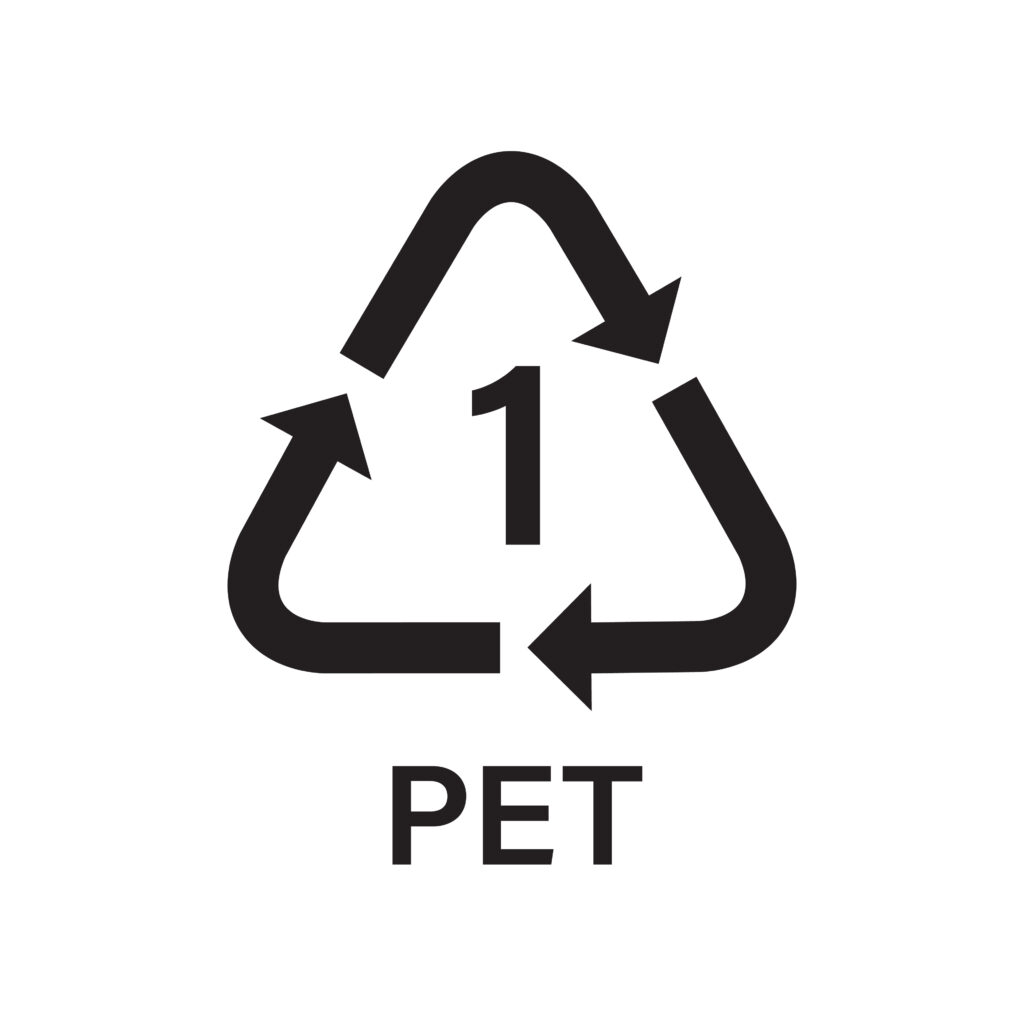
Polyethylene Terephthalate (PET or PETE) is probably the plastic that you’ve been in contact with the most. It is the most common plastic used for single-use bottled beverages because of its affordability, lightweightness, and ease of recyclability.
Because it’s so easy to recycle, it’s often part of curbside recycling programs. It is most often reused to make containers, carpets, furniture, and more.
You can find PET or PETE in:
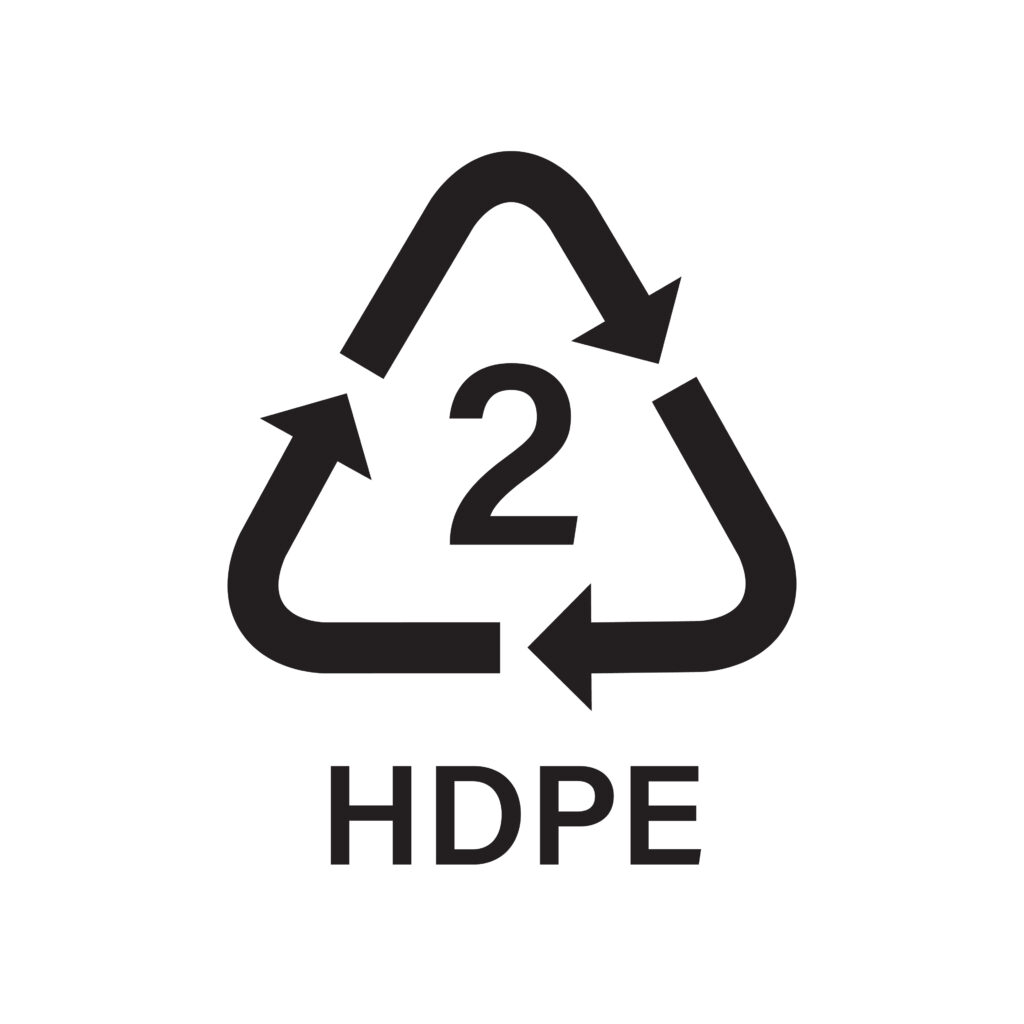
This symbol represents high-density polyethylene (HDPE). This is one of the most common plastics used in the United States. It’s highly versatile and carries a low risk of leaching during the recycling process. Products from this type of plastic are another type of plastic that is typically included in most curbside recycling program.
HDPE is most commonly recycled into pens, pipes, oil bottles, etc.
You can find HDPE in:
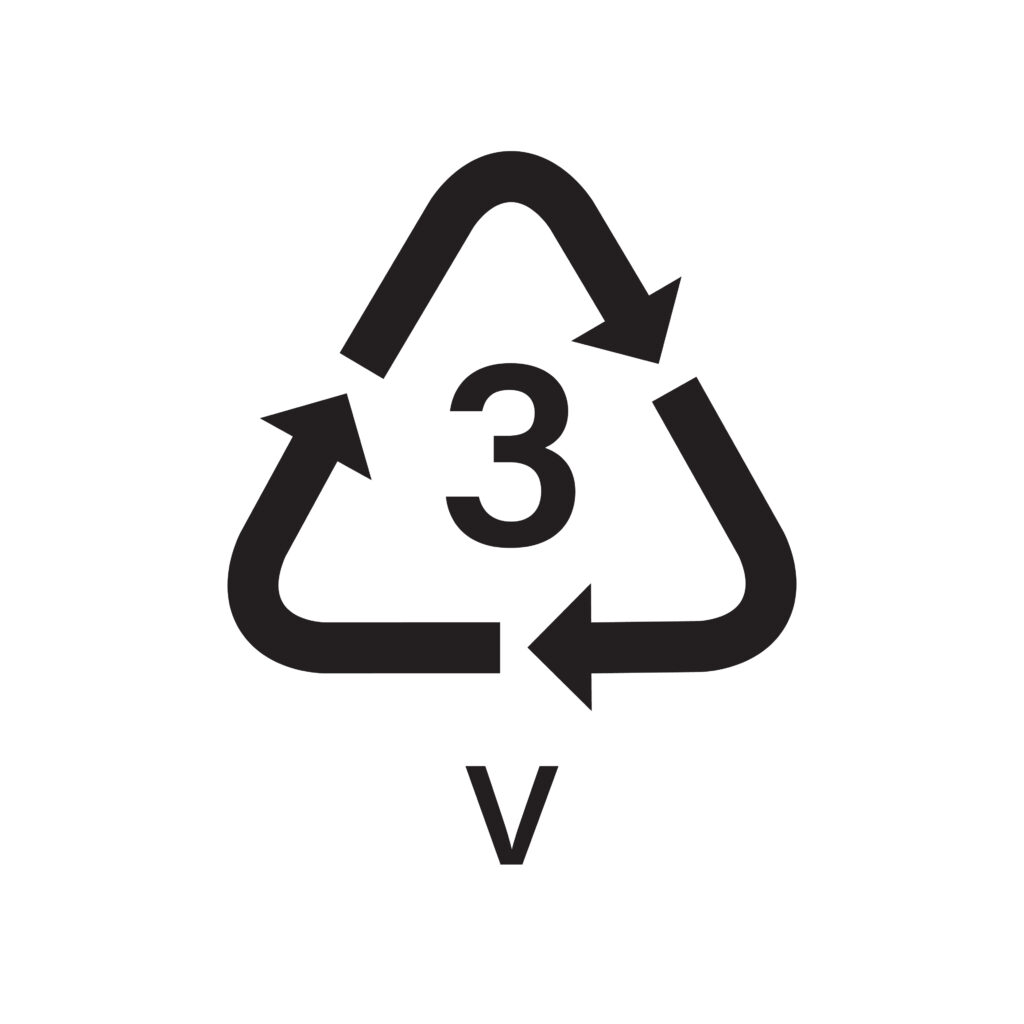
You’ve probably heard of polyvinyl chloride (PVC) or vinyl (V) before. This type of plastic is extremely tough and has great durability so it gets used in things like piping and siding for your home. Although PVC/V is used a lot for commercial purposes, it is rarely recycled and is not usually part of a curbside recycling program.
In very rare instances, you might see PVC recycled into speed bumps or roadway gutters.
You can find PVC in:
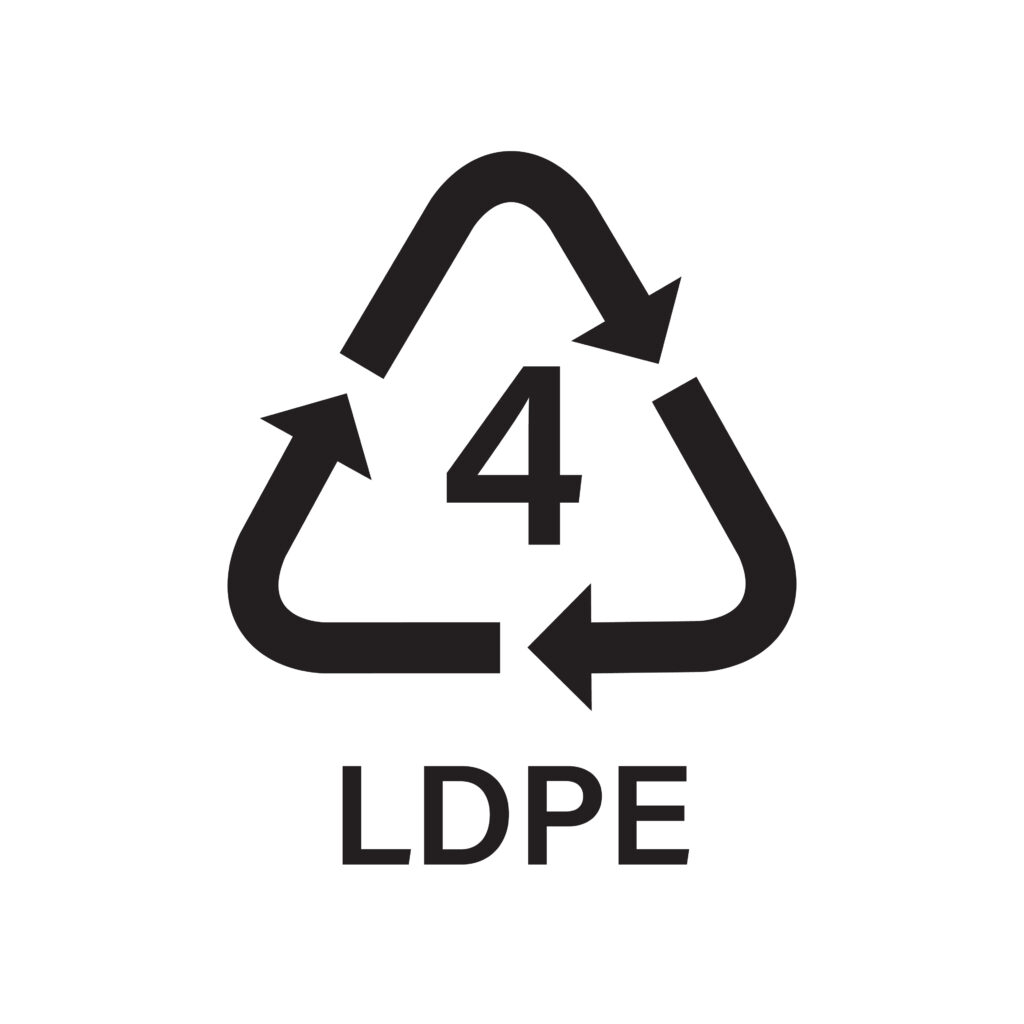
This symbol represents low-density polyethylene (LDPE), a plastic that’s both flexible and lightweight. It’s recognized for its toughness and durability, making it a popular choice for a variety of everyday plastic items like grocery bags and squeeze bottles.
LDPE is not usually recycled, commercially or through curbside programs but when it is, it can be reused for compost bins, paneling, floor tiles, etc.
You can find LDPE in:
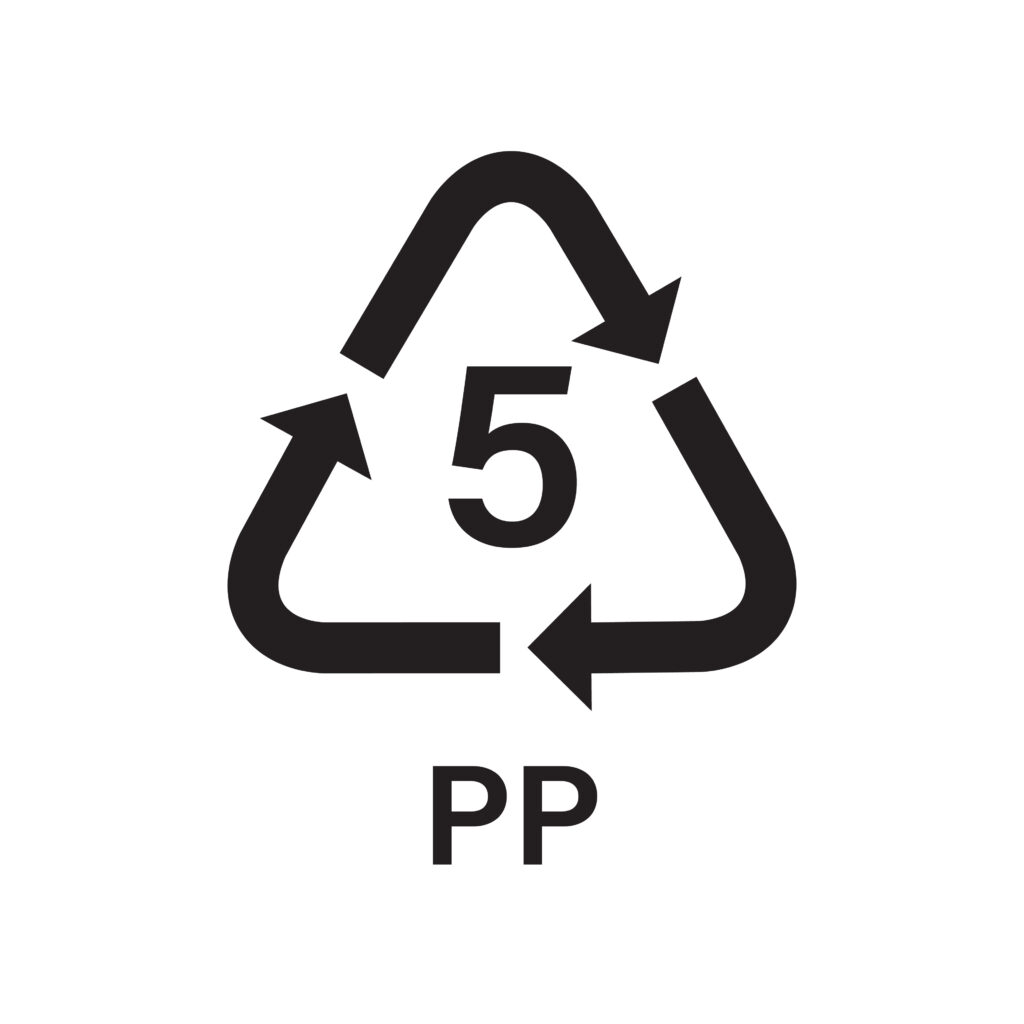
The number 5 represents polypropylene (PP) plastic. Because of its strength, long-lasting life, and low weight, this plastic is utilized in a wide range of products from furniture to plastic straws. It also has a very high melting point compared to other plastics so it’s often chosen for containers that will hold hot liquids.
In recent years, PP has been increasingly getting accepted in curbside recycling programs. Polypropylene gets recycled into signal lights, battery cables, brooms, brushes, etc.
You can find PP in:
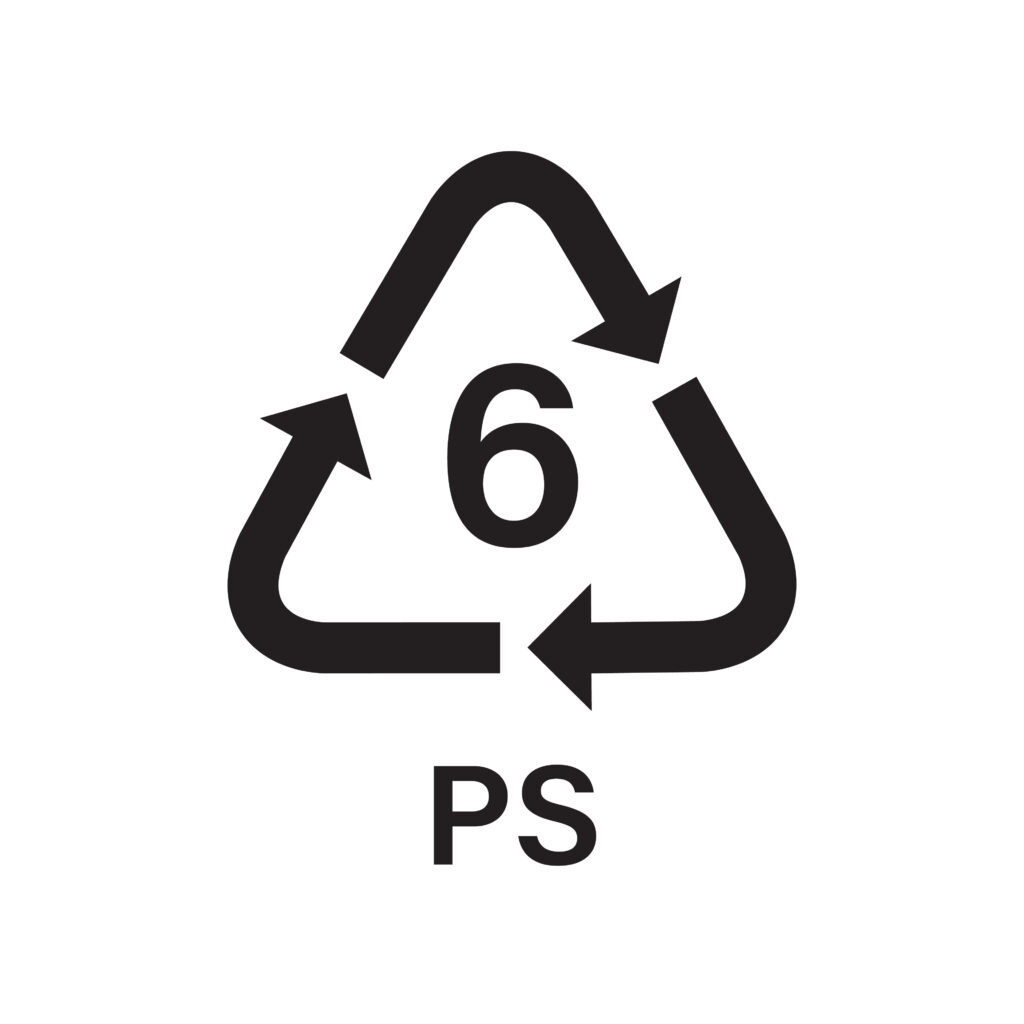
When you see a number 6 inside of the recycling symbol, this represents Polystyrene (PS). This type of plastic can be made into rigid or foam-like products. You might be more familiar with its trademark Styrofoam™. This type of plastic is notoriously hard to recycle so most curbside recycling programs won’t accept them.
When they do get recycled, you can see them reused in insulation, egg cartons, rulers, take-out containers, etc…
You can find PS in:
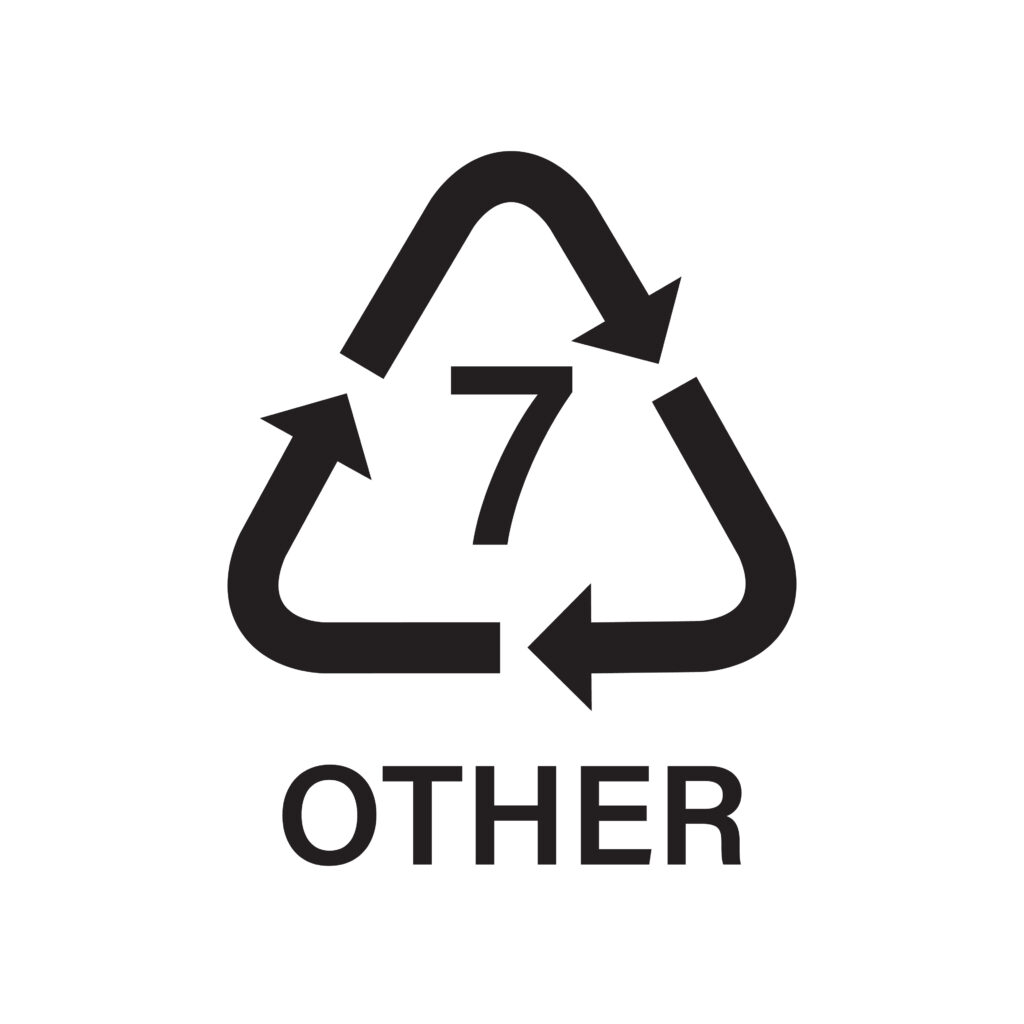
When you see this recycling symbol, it can also have the word, “other,” written below it. A wide range of plastic that doesn’t fit in any of the previously discussed groups gets clumped into this one. These plastics include but are not limited to, acrylic plastic, polycarbonate plastic, nylon, and fiberglass.
These “other” plastics are not traditionally recycled so you won’t find them in many products. But when they are, they are made into plastic lumber, custom products,
You can find other plastics in:
Plastic recycling symbols don’t have to be difficult to understand. With so many products being made out of plastic these days, it can be hard to wrap your head around all of the symbols and meanings. With the help of this guide, you can be confident in recycling your plastics.
When you buy plastic packaging from Comar, you can be confident in knowing you’re making a sustainable choice. This is because we believe in putting sustainability first in our manufacturing practices. Brand owners and retailers have challenged their supply chains to deliver more sustainable options and Comar has risen to that challenge.
When we manufacture our product, we use recyclable resins and offer options with lightweight designs and up to 100% post-consumer recycled content (PCR). Comar strives to contribute positively and sustainably to our planet’s future. Our biggest goal is to grow and operate responsibly while promoting sustainability practices that reduce our environmental impact.
Our products are all created to help our customers meet their sustainability goals. We strive to collaborate with our value chain partners to tackle macro-environmental challenges with creative solutions.
On top of this, our operations follow best practices that engage all of our employees and implement programs that result in energy, waste, water, and greenhouse gas emission reductions.
When you stay informed as a consumer and producer, you can make the right choice in sustainable practices. Adopting recycling best practices like choosing the right plastics for recyclability when going through the options of manufacturing materials. Buying products manufactured from plastics that have a higher degree of recyclability are great way to promote sustainability in your business. Adopting recycling best practices in your day-to-day and business life can lead to an overall positive environmental impact.
When you partner with Comar, you work with a manufacturer who incorporates sustainability into every level of our business.
EXPLORE SUSTAINABLE PACKAGING